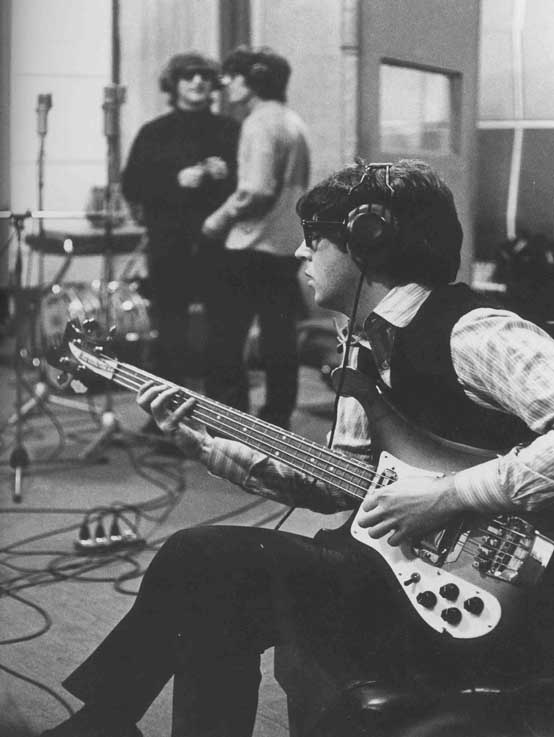| Playing
with Tape |
| One of the fundamental techniques
of electronic music, and particularly musique concrete, is to manipulate
the very medium of the genre: tape. The sound of the Beatles in the mid
1960s evolved in large part because of their discovery of tape effects.
Two of the most obvious ways to manipulate tape is (a) to change its speed
and (b) direction; moreover, as we have already seen, you can cut tape
and move it. |
| Geoff Emerick (Lewisohn 1988:
74): With "Rain" the Beatles played the rhythm track really
fast so that when the tape was played back at normal speed everything
would be so much slower, changing the texture. If we’d recorded it at
normal speed and then had to slow the tape down whenever we wanted to
hear a playback it would have been much more work. |
| Technology invented for one
recording effect often has applications elsewhere. |
| Geoff Emerick (Lewisohn 1988:74): An offshoot of ADT was that we had a big audio oscillator to
alter the frequency of the tape machines . . . . We would drive it through
a power amp and the power amp would drive the capstan wheel and enable
you to speed up or slow down the machine at will. John — or George if
it was his song — used to sit in the control room on mixes and actually
play the oscillator. |
| Emerick (Lewisohn 1988:
74): Revolver very rapidly became the album where the Beatles
would say, "OK, that sounds great, now let's play it backwards
or speeded up or slowed down." They tried everything backwards,
just to see what things sounded like. |
| One additional striking
feature of "Rain" is the gibberish line at the end of the song. |
| George Martin (Lewisohn
1988:74): I was always playing around with tapes and I thought it
might be fun to do something extra with John’s voice. So I lifted
a bit of his main vocal off the four-track, put onto another spool,
turned it around and then slid it back and forth until it fitted.
John was out at the time but when he came back he was amazed. Again,
it was backward forever after that. |
| Lennon also claims to
have discovered the sound on his own by accidentally threading his
tape deck backwards while in a drugged stupor at home. |
| |
| Tape Loops |
| One of the most fundamental
techniques of musique concrete is cutting and splicing tape. Composers
in this medium discovered early on that by splicing the end of a piece
of tape to it's beginning you created a loop. They used these loops often
to create rhythmic and hypnotic patterns. As the Beatles became increasingly
aware of the techniques of musique concrete, they applied them in their
music. |
| Emerick (Lewisohn 1988:72):
The tape loop idea started because they all had Brennell machines....
Paul in particular used to make his own loops at home and walk into the
studio with bags full of little reels saying "listen to this!" The seagull-like
noise on "Tomorrow Never Knows" is really a distorted guitar. |
| Martin (Lewisohn 1988:72):
We did a live mix of all the loops.... All over the studios we had people
spooling them onto machines with pencils while Geoff did the balancing.
There were many other hands controlling the panning. |
| Phil McDonald (ibid): We had
five machines running.... Geoff would say "OK, let’s lift that fader,
that sounds good." It was done totally off the cuff. The control room
was as full of loops as it was people. |
| Emerick (ibid): I laid all
of the loops onto the multi-track and played the faders like a modern
day synthesizer. |
